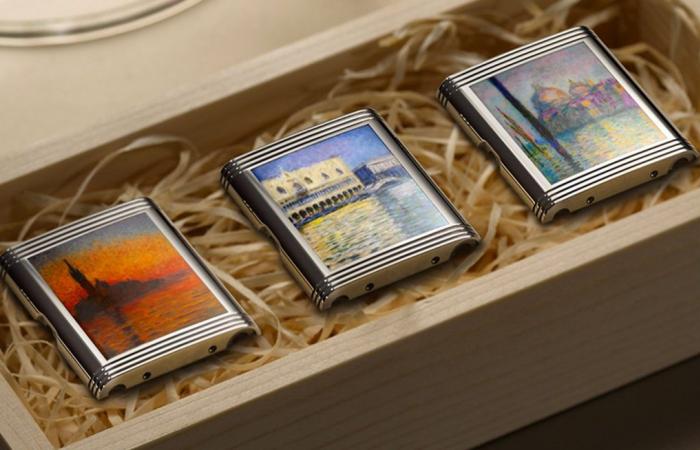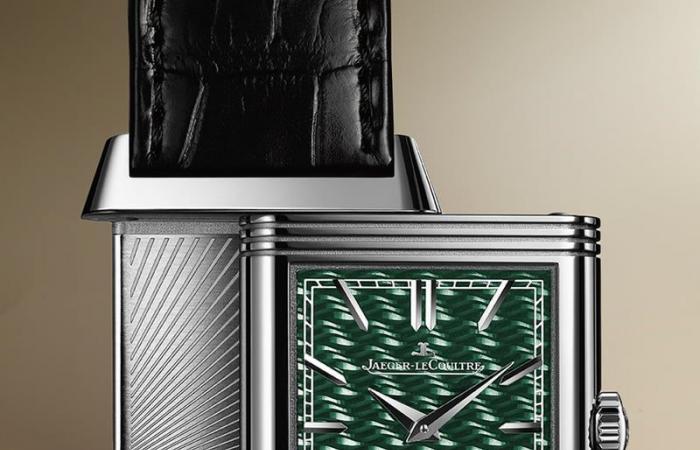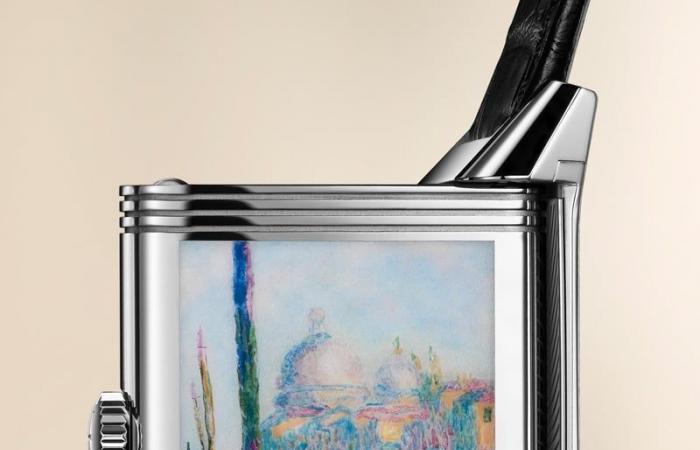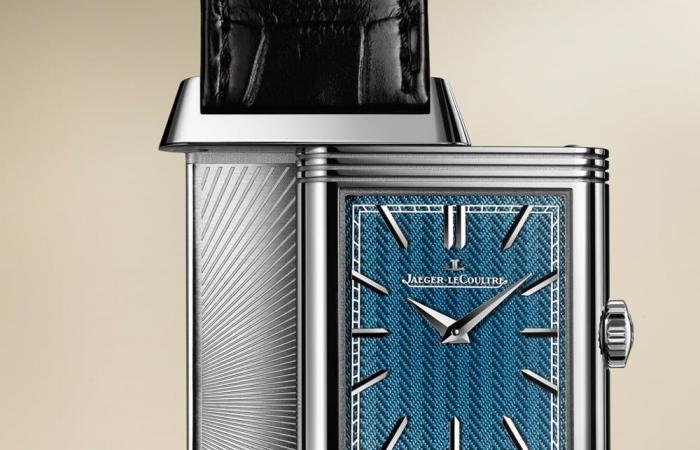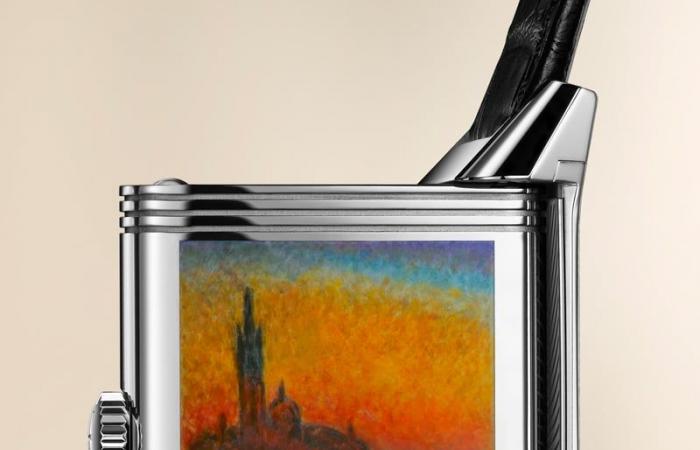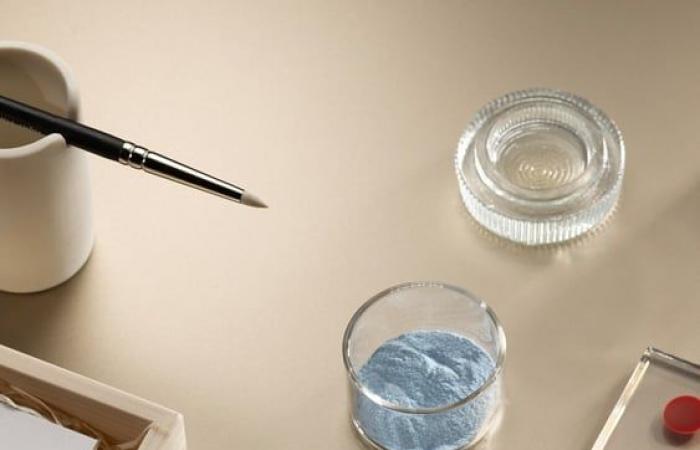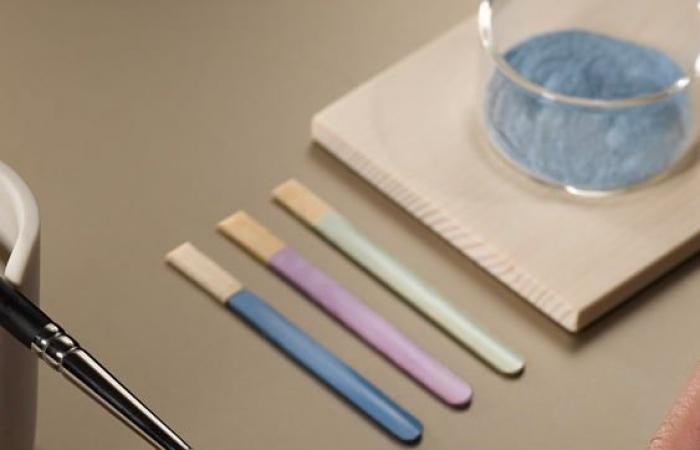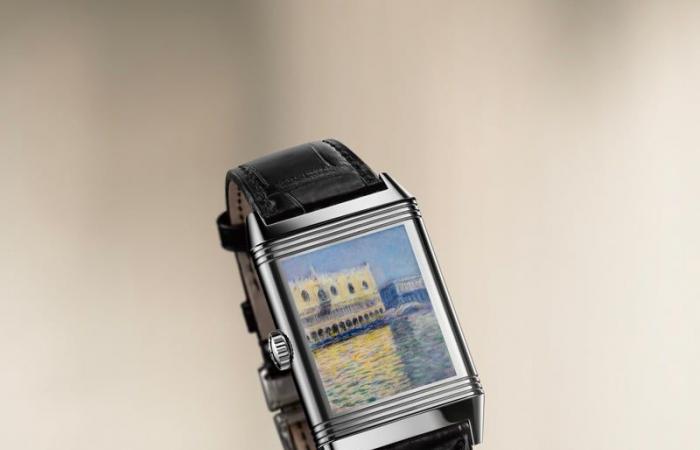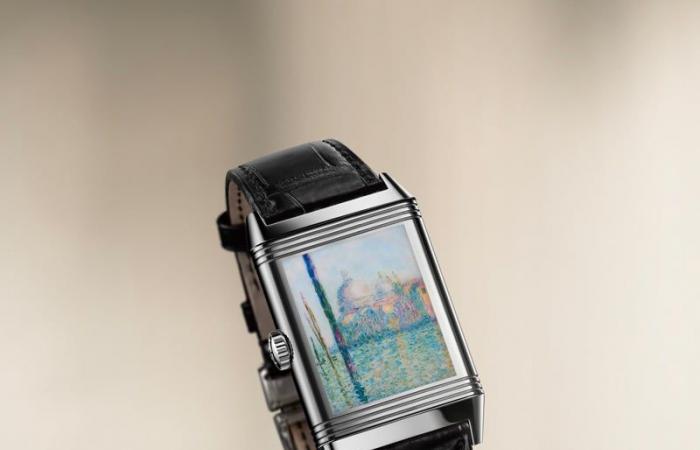Within the sublime exhibition Homo Faberwhich celebrated until September 30, 2024 in Venice the know-how and artistic craftsmanship of the whole world, the Swiss house Jaeger Lecoultre unveiled three exceptional enameled watches, in homage to the painter Claude Monet and to the Italian city which notably inspired three captivating paintings. Diving into the secrets of tables and the design of Reverso…
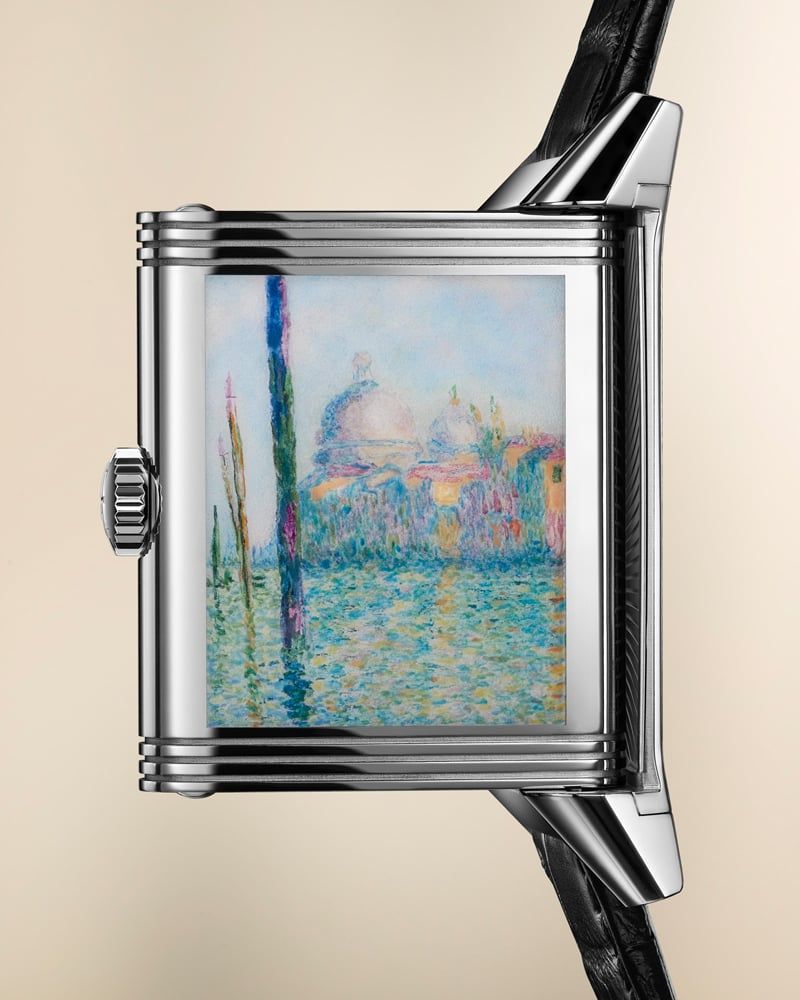

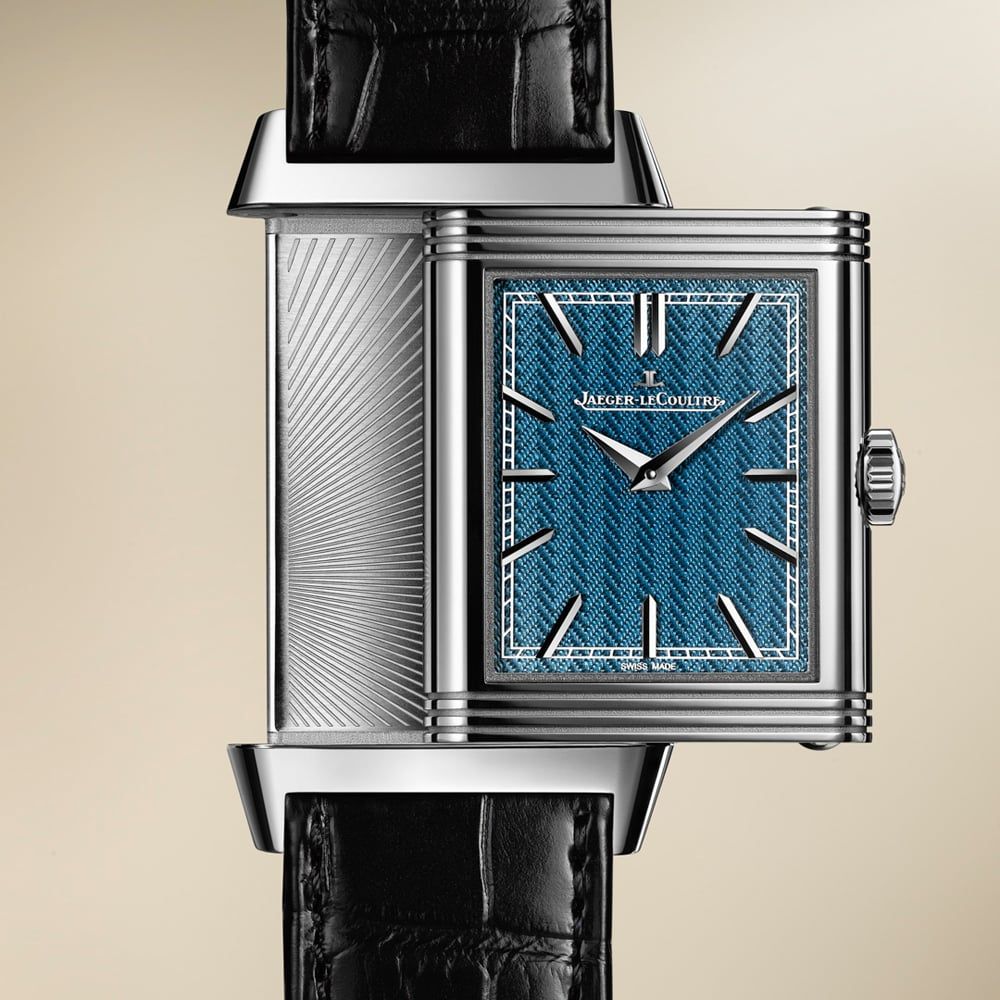

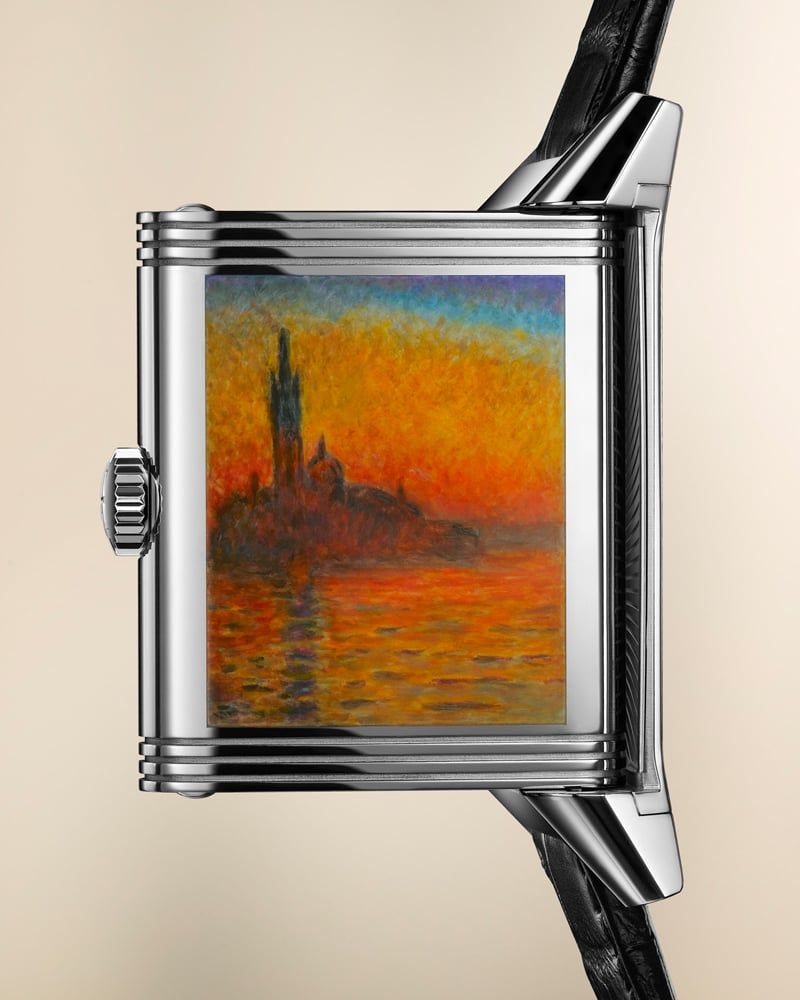

The Reverso, a jewel of art and watchmaking
On the island of San Giorgio Maggiore, in Venice, the “Homo Faber” exhibition displays the know-how and craftsmanship of several hundred artisans from all continents. A sublime highlighting of the art object, within which Jaeger-LeCoultre fully registers. Among the works exhibited, the Swiss watchmaker notably presented its latest collection of Reverse enamelled – real little jewels of art, which have been the success of the house for more than a decade. For the occasion, six enamellers from the factory took turns in the exhibition, sharing their know-how and presenting the very latest collection, in homage to the painter Claude Monet.
Because the Reverso is one of those rare watches that fulfills both common functions, but which is also available as a little piece of art thanks to a sliding support. Able to rotate 180°, the dial is found inside the metal stretcher and leaves a neutral surface, which for several years has hosted enameled decorations inspired by the works of masters of art history. Hokusaï, Piet Mondrian, Gustav Klimt, Rembrandt, Alfons Mucha… and, this year, Claude Monet – more precisely the fascinating paintings he created in Venice during his stay in 1908. So many emblematic paintings, transcribed on very small surfaces thanks to the work of goldsmiths from the small hands of the Swiss house’s workshops.
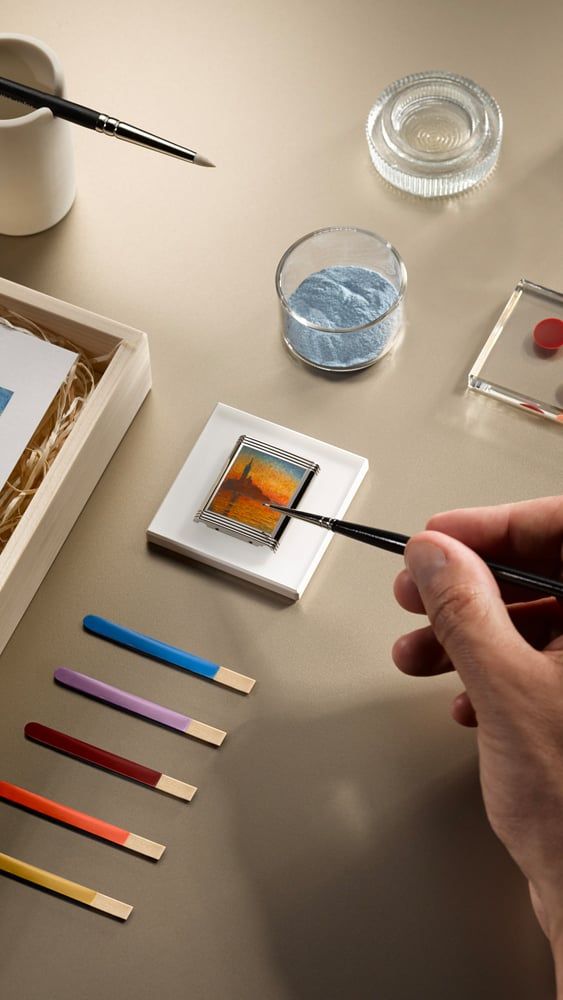

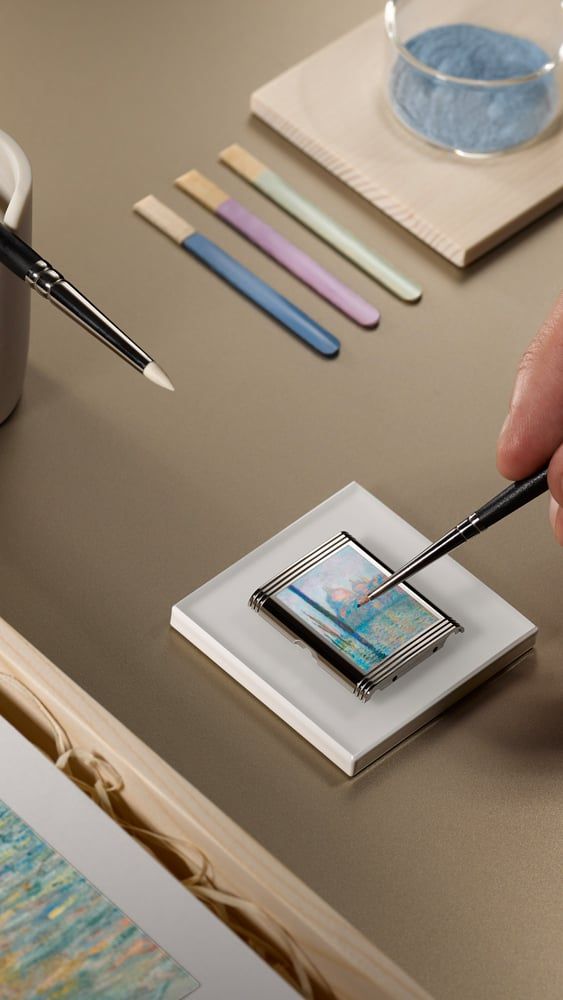

Painting like Monet: a challenge taken up by Jaeger-LeCoultre enamellers
Contrary to what one might imagine, the multiple details and ornaments in the paintings of Mucha or Rembrandt turn out to be much simpler to reproduce than the impressionist touches of Monet. “The challenge for us was to find Monet’s technique and adapt it to the reduced size of the Reverso background.” tells us one of the enamellers of Jaeger-LeCoultre. A spontaneous technique difficult to reinterpret in copy, and to transpose from a few centimeters to a few millimeters. “Our work came down to a little archeology of painting to find the touch, to best convey the painter’s intention and, above all, to capture this light which so captivated him..”
From the Ducal Palace immersed in the Venetian waters tinged with ocher lights, to the island of San Giorgio Maggiore covered in an orange atmosphere, passing by the Basilica of Santa Maria della Salute overlooked by reeds and submerged posts in the Grand Canal… Each canvas calls for a different touch, a dissimilar chromatic palette. “Our work is almost that of a sculptor” evokes an enameler from the Swiss house. “We work by touch, and the essence of the painting only appears to us at the end. It’s an almost counterintuitive process for an enameler, but it’s also the only way to successfully render Monet’s brushstrokes on a very small scale..” An almost experimental work, allowing works nearly a meter high to be transposed onto a surface of 25 by 30 centimeters.
Another major challenge: recreating the illusion of impasto observable to the naked eye on the canvases of Claude Monet. A difficult texture to reproduce, which required four layers of enamel to give the colors and paint the intensity and substance of the original paintings. Nearly 80 hours of work are hidden behind the making of each model… whose dials echo the patterns of the canvases, guilloche diamonds recalling Monet’s play of light and shadow, with shades of blue responding to the turbulent skies of French painter.
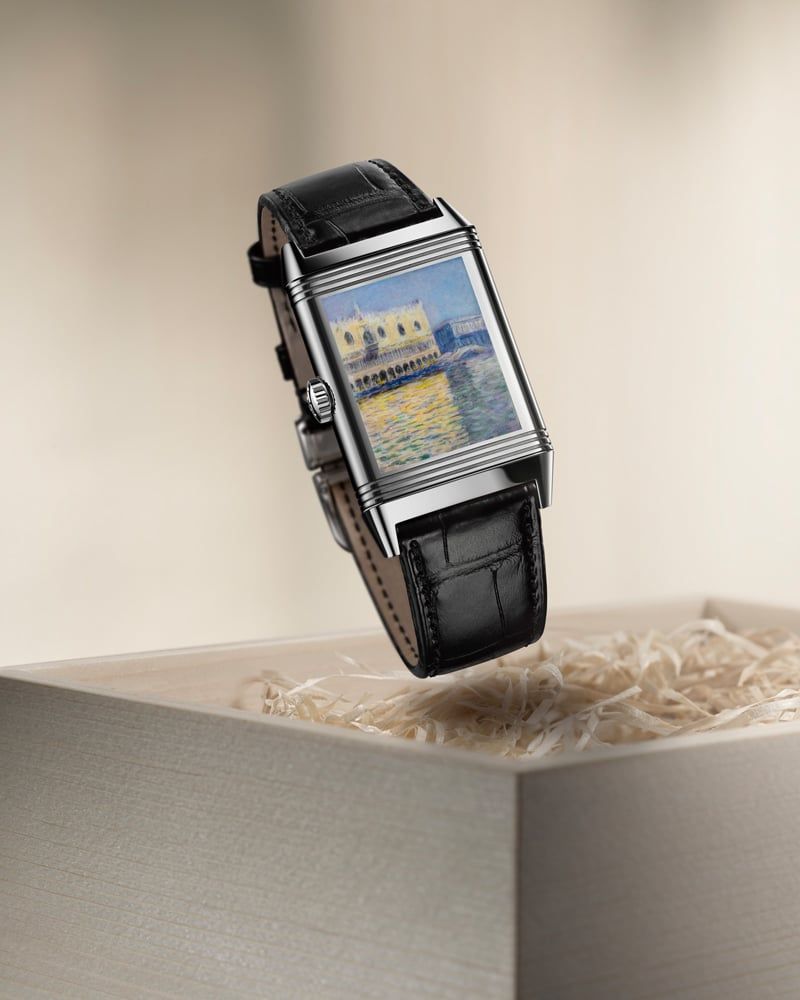



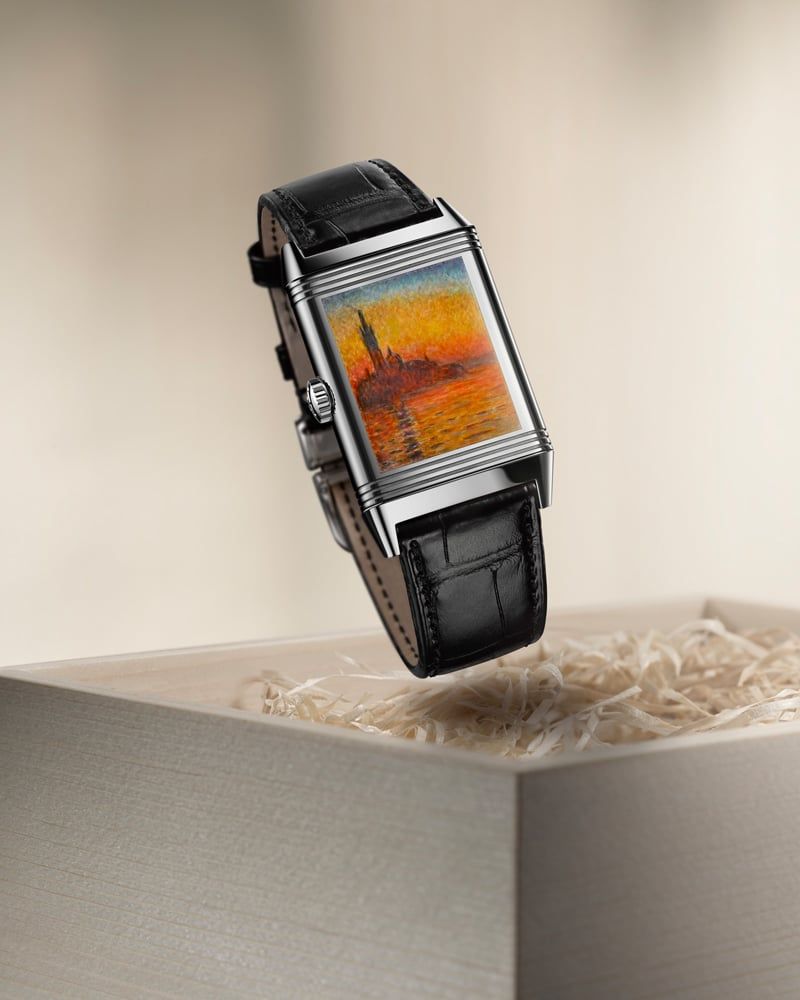

Jaeger-LeCoultre, Monet, Homo Faber… A Venetian love story
When Monet settled in Venice in 1908, he did not consider representing the city in painting, which he judged, to use his words, “too beautiful to paint”. Leaving his property in Giverny where he had been confined for several years, the artist discovered with amazement the Grand Canal, the autumnal lights reflecting on the ripples of the water, and the Venetian architecture submerged by the tides.
After Venice, Monet would no longer travel – as if he no longer needed to see other landscapes. Since the continuation of Saint Regis (at the time called Britannia), observes the church of La Salute, the island of San Giorgio Maggiore, and takes out his paintbrush, despite himself. He sketches what he sees, fascinated, without ever being satisfied with his features. Back in Normandy, the waves, the rays of light, the colors and the buildings of Venice haunt him and encourage him to finish what he had started. From this ten-week stay, 37 paintings were born, completed in Giverny, and which today contribute to the beauty and rich heritage of the Italian city.
To the point of inspiring, therefore, three models of Reverso watches enamelled with Jaeger-LeCoultreoffered in a limited edition of ten copies each, and presented at the Homo Faber Biennale in Venice throughout last September. A vibrant tribute to the city and the fascination it exerts on artists, even today.

